| What Happened There? A September 2008 Cruise Along the Coast of Croatia - 1 Ralph Roberts W9885, but sailing W 10435 Pinčika with Mato Ilijic ... |
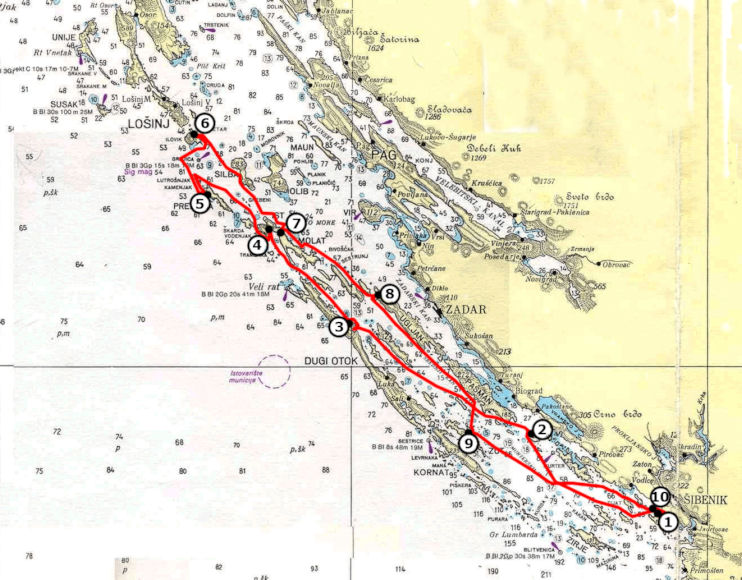 |
|
"What Happened There?"
Mato seemed a little surprised
that my question was asked in a fairly relaxed manner, having been
knocked over far enough for water to pour in over the side of the boat**. Mato had handled the
increasing wind conditions perfectly well up to this point, so the
sudden near knock-down had surprised me a little. Though as it was far
from being my first experience of this situation, it didn't appear too
much to worry about. However, it now seemed prudent to change our
planned (windward) overnight stopping point on the island of Losinj,
and instead turn back south, running to the safety of a protected
harbour on the much smaller island of Premuda. (A video link of the run
to Premuda at up to nearly 10 knots can be found at: http://video.google.com/videoplay?docid=7599338468797649932)
** A contributory factor to the near-capsize may have been Mato's changing his mainsheet system to a complete centre main, which meant that when sailing close-hauled, the downward pressure on the mainsheet to keep the boom central was considerable, and made it a little less easy to release quickly. Mato later added a bridle to the system, which made the complete centre main system work much more efficiently when sailing close-hauled. Mato had been reluctant to permanently seal the transom flaps on his Wayfarer World to resolve the problem of allowing water to leak into the boat whilst sleeping, preferring instead to keep the option of being able to use them after a capsize. He found however, that the self-bailers worked far more effectively in removing the excess water once the boat was sailing again, than the transom flaps. 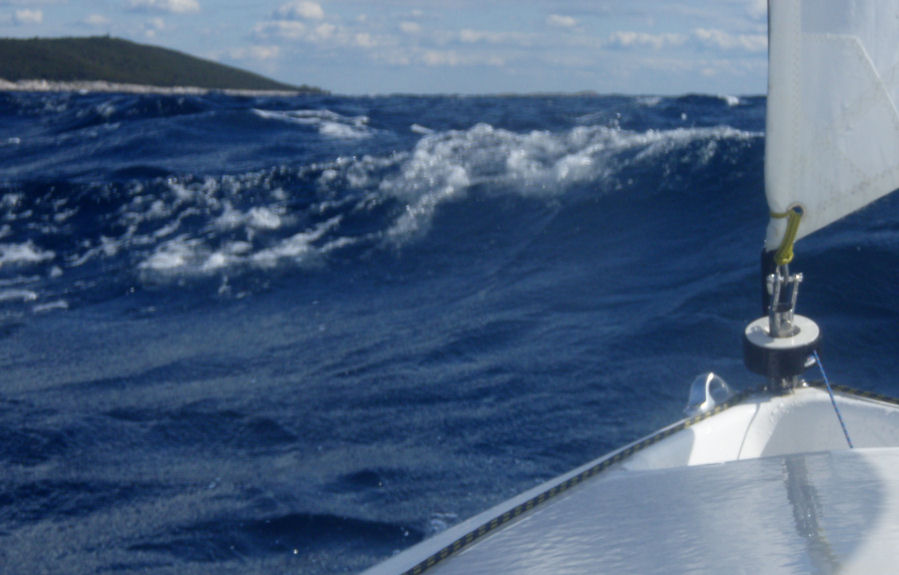 Sailing in strong winds towards Premuda Sailing
with Mato Ilijic in his Wayfarer World, we had made good progress north from
our starting point at Zablace (near Sibenik) to our intended
destination of
Opatia (near Rijeka), but this was to prove about as far north on our
cruise as
we were going to get. A strong north-easterly wind - locally named a
'Bura' -
had been blowing for the previous 2 days, but had increased in
intensity. The
weather along the Croatian coastline tended to differ quite widely from
day to
day, and we had experienced conditions ranging from too little wind,
when we
had needed to either row or motor; to too much, making it necessary to
sail
with a deep-reefed main and jib. One common feature though, which I
hadn't
previously experienced anywhere else, was a fairly regular change in
wind
direction and strength, between noon and 2 pm.
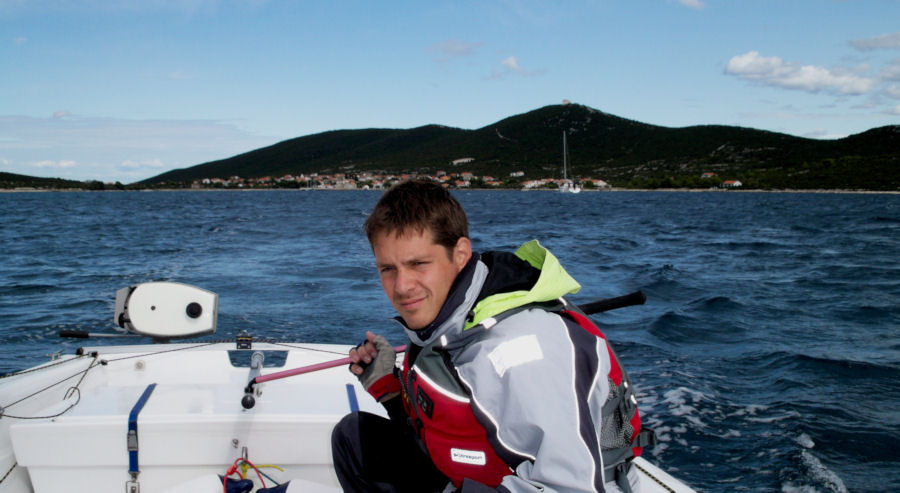 Mato at the helm of his Wayfarer World
- click here for full-sized image Sailing in Croatia can be
compared to sailing off the rocky west coast of Scotland, but with a
far greater abundance of islands, much warmer seas, and no midges!!
There are also a far greater number of coves and harbours from which to
choose somewhere to stop for the night. Small harbours had been built
long ago at any naturally sheltered spot on the islands, and each had
its own distinctive village, based around the local fishing community.
On many of the islands, there had also been extensive olive tree
cultivation, but this had gone into decline a few hundred ago, although
the extensive walls built around the olive groves were still in
prominent existence.
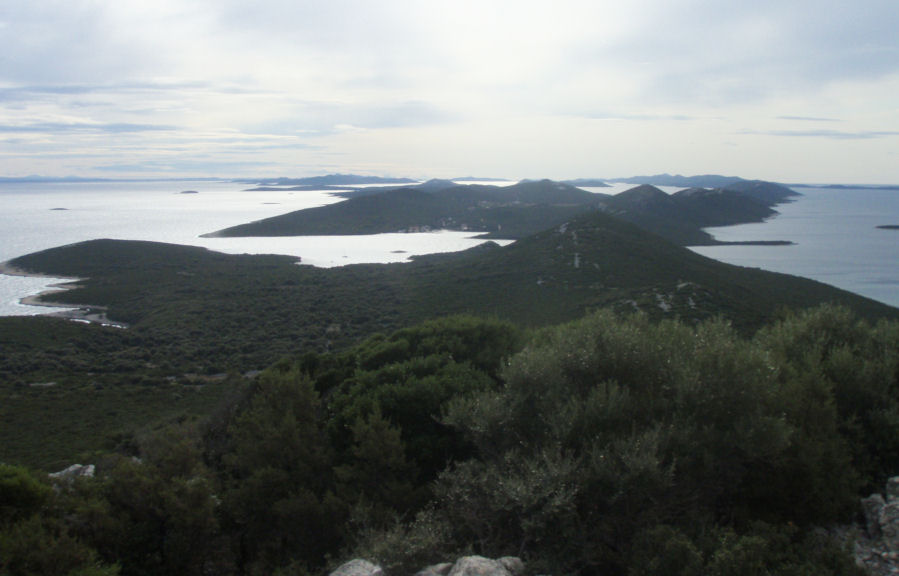 There are many islands along the
Croatian coastline
Whilst fishing is still of
obvious importance to the local community, catering for the increasing
number of yachts and motor boats appear to be the current growth
industry. Fortunately all the harbours we visited have largely retained
their natural stone-built character, and the area appears to have
avoided building the typical modern concrete marinas now usually seen
in most popular yachting areas. In many places the harbours are either
too small or shallow for the yachts, and mooring buoys are conveniently
situated for them to tie up to. It was often an interesting spectacle,
whilst sitting quietly with a beer at the local taverna, to watch the
skippers of the hired yachts picking up these moorings!
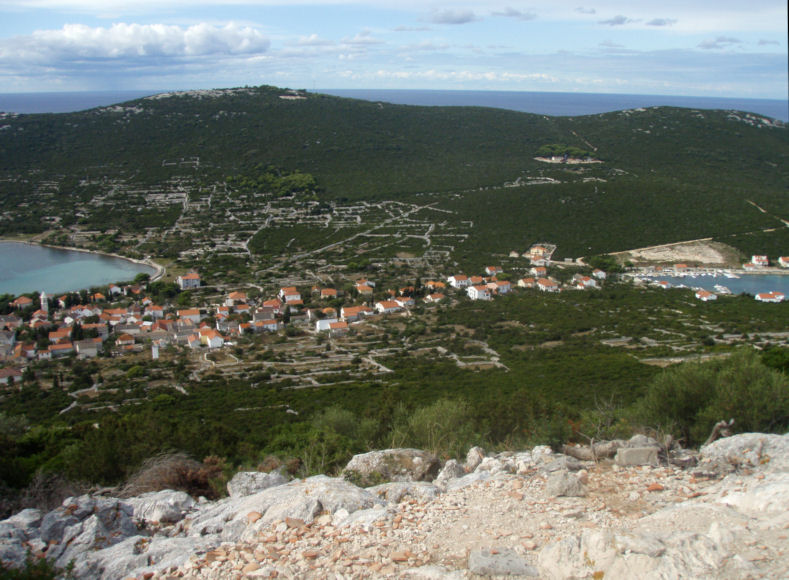 Most islands have natural harbours - old olive grove walls are also clearly visible - click here for full-sized image There were no such mooring
problems for any Wayfarer sailing the area though. We were usually able
to sail straight into the inner, shallower area of the local harbours
and find a space among the fishing boats. Only in Ilovik, the most
commercial of all the harbours we visited, was Mato told that he would
need to move to the main mooring area, where he was promptly charged
for the privilege by the harbourmaster. It was here also that I had one
of my more comfortable nights of the trip, since it was the only place
with a 'No Camping' sign by the harbour wall, and it seemed a good idea
to pay for a bed for the night. Mato was happy to sleep in his boat
each night, but with the back locker remaining in place, it was a bit
too cramped for two people. In virtually all the smaller harbours,
there seemed to be no problem in me putting up a small land tent
somewhere nearby.
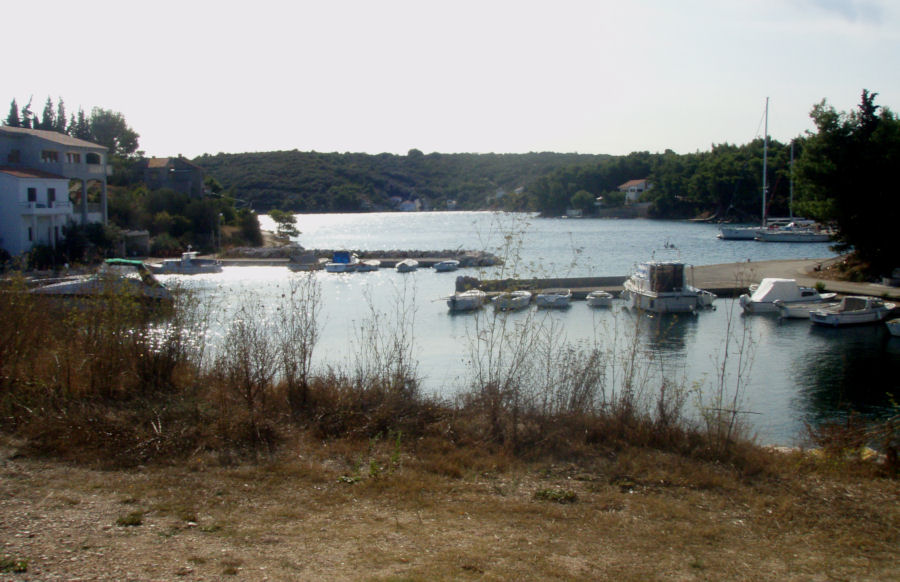 A
typical small harbour, offering ideal overnight shelter for a Wayfarer
With the profusion of islands
to navigate between, it was important to have a good chart of the area.
Mato had made up a series of laminated A4 sections of the relevant
parts of the coastline we would be sailing, and it was useful to be
able to have these readily to hand without the need to keep them either
well protected, or dry. A GPS also proved extremely helpful,
particularly Mato's latest version, which gave a picture chart of the
area being sailed, together with all other information needed. Mato had
already programmed the chart for the Adriatic area into his GPS for a
previous trip.
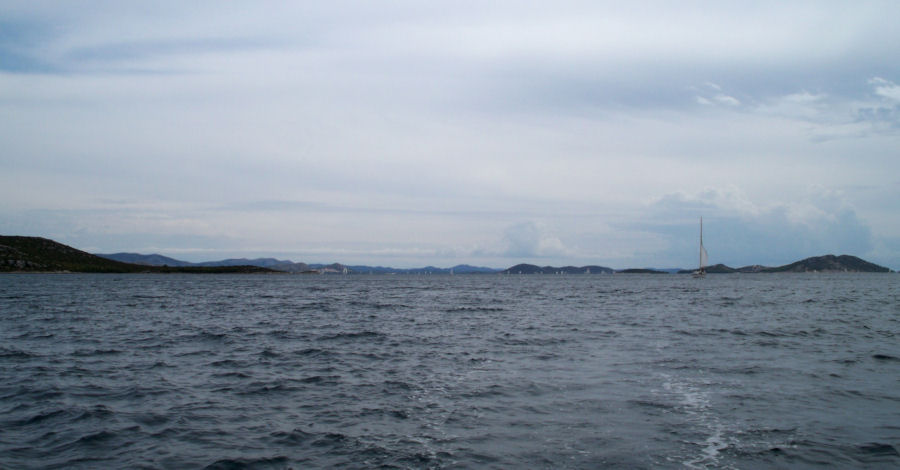 The coastline has become increasingly popular for chartered yachts. - click here for full-sized image We had first visited a local
supermarket to stock up on the provisions we thought we might need
before setting off on our trip, but we found we brought much of the
food - even the cans of beer! - back with us, since at virtually every
stop there was a convenient taverna to provide us with a more
comfortable place for both a drink, and an excellent evening meal. Not
surprisingly with a local supply of freshly caught fish, there was an
abundance of fish dishes to choose from, which Mato and I made the most
of. For an area with such a mild September climate, the sailing season
seems to finish surprisingly early, with both tavernas in Zapuntel
already closed down for the winter when we stopped by, and others we
visited very quiet, and preparing to close down.
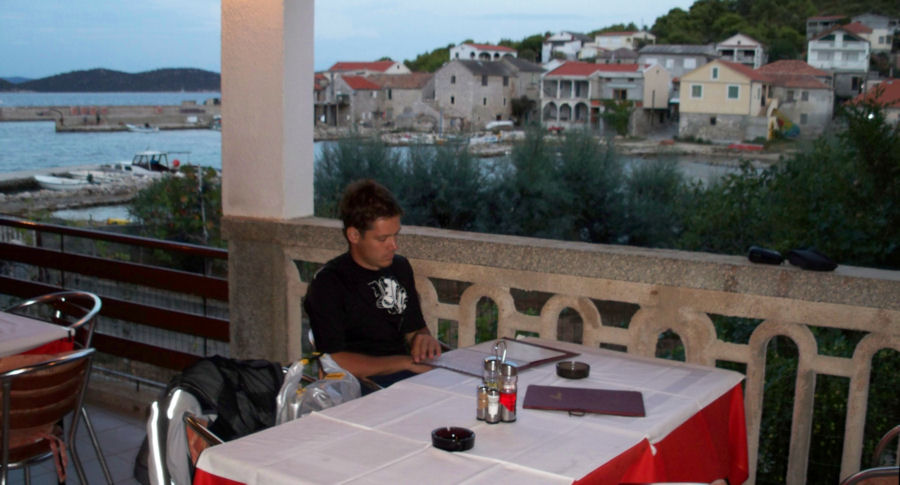 Though we curtailed our
intended trip to Opatia, making it a round trip back to Zablace
instead, the abundance of islands meant that we were able to return by
an entirely new route to that of our outward trip, and even largely
different from our previous year's cruise. One is so spoilt for choice
for islands to sail to, as well as different places to visit on each of
the larger islands, that it would be impossible not to have a great
sailing experience wherever one sails along the Croatian coastline.
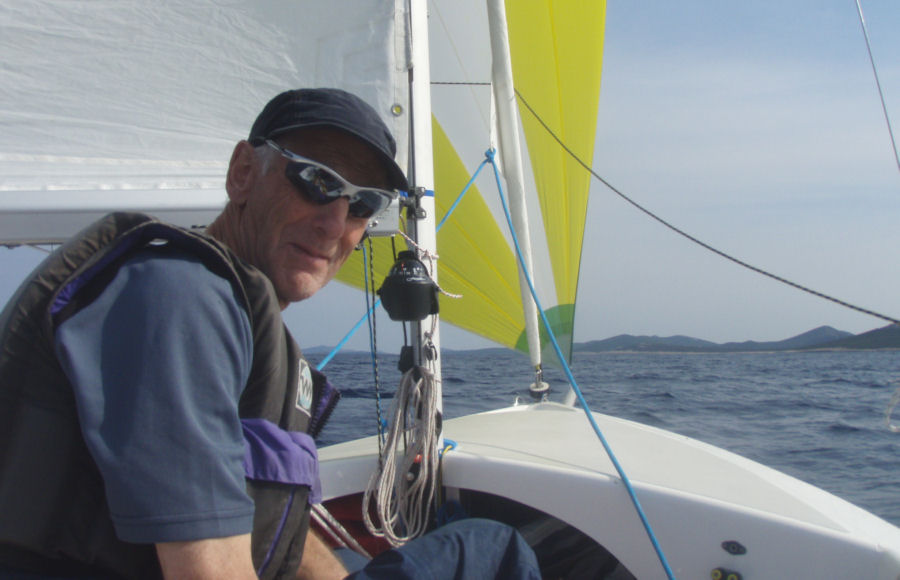 Sailing
in ideal conditions with the asymmetric spinnaker hoisted
|
| next page return to index page of this log return to logs index page |